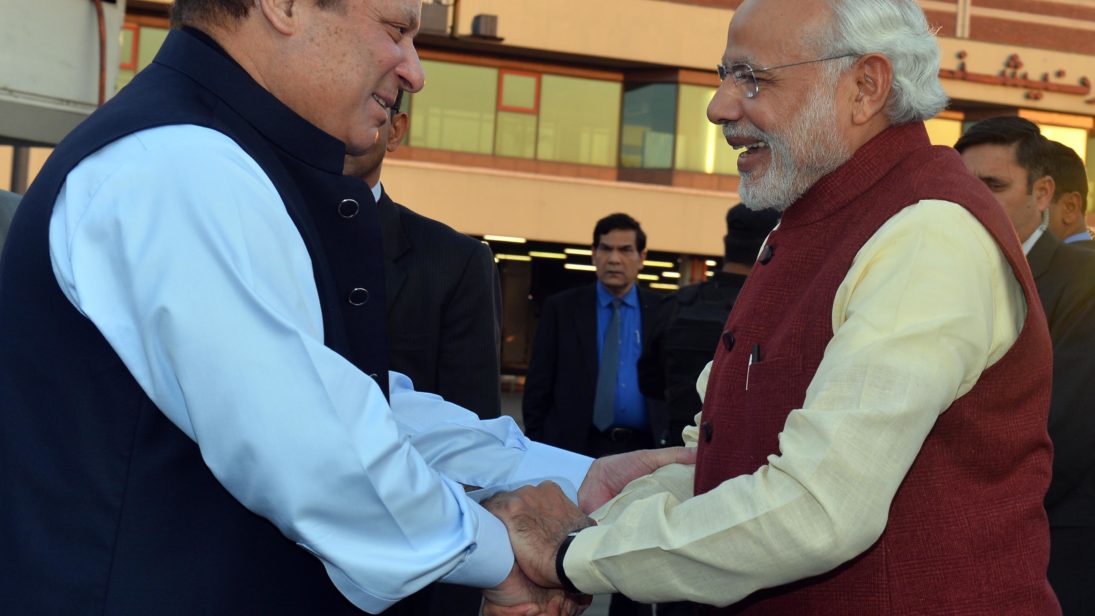
When the BJP invited Pakistan’s Prime Minister Nawaz Sharif to attend the oath taking ceremony of newly elected Indian Prime Minister Narendra Modi, it triggered different perceptions and views on both sides of the border. Undoubtedly, it’s a welcome beginning to restart the stalled peace process between the two governments. Most of the political parties (including Pakistan Tehrek-i-Insaaf, Jamiat Ulema-i-Islam (F) and Awami National Party and the opposition leader Syed Khurshid Shah) inside Pakistan have expressed positive views on the impending meeting likely to take place on the side lines of the ceremony between the two Prime Ministers. Similar voices have been heard from India when the spokesperson of BJP and Congress leaders also shared hopes to foster improved bilateral ties.
Many observers associate ‘symbolic’ value to this event, nonetheless, the meeting carries a challenge in opportunity to break the deadlock in India-Pakistan relations. The checkered history of mistrust between the two countries was further reinforced after the Mumbai incident (2008) and served to polarize the political atmosphere in South Asia. The new political regimes (Nawaz still having four more years and Narendra five) have significant time ahead to bring a thaw in bilateral relations, however, given the caveat of domestic politics on either side, moving forward in this direction represents a formidable challenge for both leaders. The PML-N government is grappling with multiple crises on the home front–ranging from energy crisis, economic stagnation, unemployment and inflation, and most importantly the ongoing war on terror. On the other hand, Modi’s landslide victory coupled with his hardline and right-wing political orientation may cast a shadow over his future political discourse. Interestingly, a common slogan during the election campaigns of Sharif and Modi has been economic stability, which might shape the future direction of a possible roadmap to normalization of relations through greater emphasis on trade. It would also offer a window of opportunity to translate their political resolve to facilitate economic growth and develop a base of mutual cooperation between the two countries.
Although Modi and the former BJP leader A.B. Vajpayee appear to be very different personalities–Modi being the Hindutva nationalist accused of fomenting anti-Muslim riots while he was the Chief Minister of Gujrat state, and Vajpayee known to be a seasoned politician with years of experience in the Central Government and considered a statesman. Nonetheless, Modi’s bold gesture in extending an invitation to SAARC member countries’ leaders is a positive move. There is an opportunity for Pakistan and India to make a good start from where the two states diverged their paths, particularly after the 1999 Lahore Declaration in the wake of the Kargil conflict, with their bilateral relations suffering from the 2002 and 2008 crises. Yet they have come a long way since overt nuclearization and can only move forward towards normalizing their relations for the mutual benefit of their respective people. It is a fact that any show of ad-hocism from either side would not only jeopardize the fragile bilateral political atmosphere but would also reinforce those voices (on both sides) that are always suspicious of resuming the dialogue process. Practically, it would not be easy to bring a quick transformation in the well-entrenched and deeply imbedded perceptions of mutual mistrust, animosity and paranoia with formidable obstacles remaining in the path to better bilateral relations. Nonetheless, if the stalled peace process is again put on track, albeit, on a gradual but steady pace, it would be a significant achievement towards bringing a much needed thaw in India-Pakistan relations. This would only be possible if both sides demonstrate magnanimity, flexibility and a determination to reconcile with each other’s legitimate concerns on the basis of sovereign equality between the two nuclear weapons states.
***